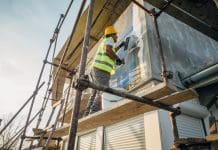Waste electrical and electronic equipment (WEEE) is a complex mixture of materials and components that because of their hazardous content can cause major problems for the environment and for human health. The production of modern electronics also requires the use of scarce and expensive resources including rare metals. To improve the environmental management of WEEE and to contribute to a circular economy and enhance resource efficiency, the collection, treatment and recycling of electronics at the end of their life is essential.
EEE includes most products that have a plug or have need for a battery.
Most businesses will need to recycle WEEE such as old computers, fluorescent tubes and telecommunications equipment from time to time. This type of WEEE known as non-household or commercial WEEE cannot often be recycled through household waste collections or deposited at Household Waste Recycling Centres.
Where a business is to dispose of the EEE as waste there are a number of options.
If the electrical and electronic equipment is leased or rented it can be returned free of charge to the equipment supplier.
Otherwise the Producer Compliance Scheme will apply. The WEEE can be returned to the producer free of charge if It was sold after 13 August 2005 or it was sold to replace EEE that was sold prior to 13 August 2005 – known as ‘historic’ WEEE. A list of registered EEE producers and their compliance schemes is available from the Public Registers at https://www.gov.uk/government/statistics/weee-registered-producers-public-register .
The business producing WEEE may have to pay for its collection, treatment, recovery and sound environmental disposal when:
- Discarding EEE which was purchased before 13 August 2005 (historic WEEE) and the business is not replacing it with equivalent new EEE;
- The producer or its compliance scheme cannot be traced;
- An alternative arrangement with the producer cannot be negotiated;
- There is a need to have control of the recycling route (such as for data sensitive WEEE);
- The WEEE has a resale or reuse value (such as PC / ICT equipment).
Whilst the Regulations place obligations on producers regarding the scheme for collection, treatment and recycling of the equipment there is no actual obligation on those generating WEEE to use the scheme and businesses may wish to negotiate with suppliers about who takes responsibility for their EEE at the end of its life.
Whichever option applies, when a business does have WEEE to recycle, it has a Duty of Care to act responsibly and ensure that the contractor it appoints to collect the WEEE is legitimate and has the appropriate licences and permits.
Alternatively, WEEE may be delivered directly to an appropriate facility. This could be a reuse organisation or a private contractor and in either case there will be a charge for recycling WEEE and possibly a minimum charge or quantity of waste accepted. There will be a need to:
- Ensure the site is permitted/ licensed to accept the WEEE;
- Classify the waste using the List of Waste (EWC) Code(s);
- Adhere to site safety instructions and use PPE if necessary and requested to do so;
- Segregate WEEE groups if required by the site to do so;
- Keep full records of waste transfer and/or consignment notes for 2 or 3 years respectively.
More information on WEEE and dealing with waste can be found in the CIP Environmental Manual www.cip-books.com.
Sarah Kenny
Sales and Marketing Manager
Construction Industry Publications Ltd
Tel: 0870 078 4400
















